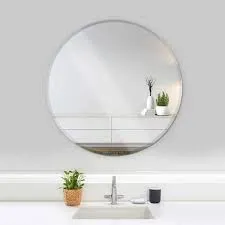

Exploring Clear Low-E Glass A Window to Energy Efficiency
In today's world, where the pursuit of energy efficiency is more critical than ever, the construction and architecture industry are continuously evolving to meet environmental challenges. One innovative solution that has gained significant attention is clear low-emissivity (Low-E) glass. This advanced glazing option not only enhances the aesthetics of buildings but also plays a vital role in reducing energy consumption and improving indoor comfort.
What is Low-E Glass?
Low-E glass is a type of energy-efficient glazing that has a thin, virtually invisible metallic coating applied to its surface. This coating reflects heat while allowing natural light to pass through, making it a perfect option for residential and commercial buildings alike. The term clear low-E glass refers to the specific type that retains its transparent quality, offering a clear view while providing excellent thermal performance.
The Science Behind Low-E Coating
The low-E coating works on the principle of emissivity—the ability of a material to radiate energy. Standard glass has a high emissivity, allowing heat to escape during colder months and enter during hotter months. In contrast, low-E glass has a significantly lower emissivity, meaning it is excellent at reflecting heat back into the building during winter while blocking unwanted heat from entering during summer.
There are two main types of low-E coatings hard-coat and soft-coat. Hard-coat low-E glass is produced through a high-temperature process that creates a durable, low-emissivity surface. This type of glass is ideal for commercial applications and places where the glass will face higher levels of wear and tear. On the other hand, soft-coat low-E glass is manufactured at lower temperatures and has a finer, more delicate coating, making it better suited for residential applications due to its superior energy performance and aesthetic appeal.
Benefits of Clear Low-E Glass
1. Energy Efficiency One of the most significant advantages of clear low-E glass is its ability to reduce energy consumption. It can help maintain a stable indoor temperature, thereby decreasing reliance on heating and cooling systems. As a result, homes and buildings utilize less energy, leading to lower utility bills and reduced environmental impact.

2. UV Protection Besides regulating temperature, low-E glass also provides protection against harmful ultraviolet (UV) rays. By reflecting a significant portion of UV radiation, this type of glass helps prevent fading and deterioration of furnishings, flooring, and artwork, prolonging their lifespan.
3. Glare Reduction In spaces with abundant natural light, glare can be a considerable discomfort. Clear low-E glass minimizes glare from direct sunlight, making indoor environments more pleasant and increasing productivity in workspaces.
4. Sustainable Choice Using low-E glass can significantly contribute to building certifications such as LEED (Leadership in Energy and Environmental Design). By incorporating energy-efficient materials, builders can achieve a higher rating, promoting sustainable and eco-friendly construction practices.
5. Enhanced Comfort With its superior thermal performance, low-E glass helps maintain consistent indoor temperatures throughout the year. This contributes to a more comfortable living and working environment, providing a sense of well-being for occupants.
Applications of Clear Low-E Glass
Clear low-E glass is versatile and can be utilized in various applications, from residential windows to commercial facades. In homes, it is often used for windows, sliding doors, and skylights, allowing homeowners to enjoy natural light without sacrificing energy efficiency. In commercial buildings, low-E glass can be integrated into curtain walls and storefronts, contributing to a modern and sleek appearance while optimizing energy performance.
Conclusion
Clear low-E glass represents a significant advancement in building technology, integrating energy efficiency with aesthetic appeal. As the world becomes increasingly aware of the importance of sustainability and energy conservation, the demand for innovative solutions like low-E glass will continue to grow. By choosing clear low-E glass, builders and homeowners not only invest in their comfort and lower energy bills but also contribute to a more sustainable future. Embracing such technologies is essential for creating environmentally responsible buildings that harmonize with nature while providing functional and beautiful living spaces.